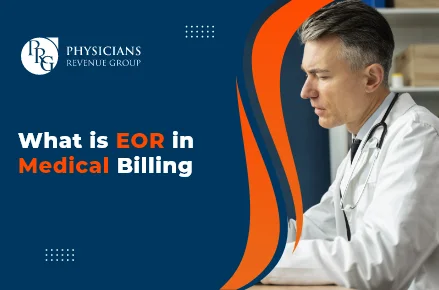
Email: info@prgmd.com | Call: +1 (630) 242-6474
Business hours: 9:00 to 5:00 | Monday to Friday
Email: info@prgmd.com | Call: +1 (630) 242-6474
Business hours: 9:00 to 5:00 | Monday to Friday

Table of Contents
ToggleIn healthcare, patient accounting is a part of hospital accounting. For starters, the hospital accounting covers a hospital’s income statement and balance sheet. It includes patient revenues, other services like parking and food services, physicians’ salaries, and expenses such as rent, supplies, and utilities. On the other hand, patient accounting in healthcare revenue cycle management is specific to each patient.
Healthcare accounting includes services that patients receive, medicine and other items used in their care, with the bills generated. The overall process also includes payment tracking from:
Moving on to the juicer part – let’s explore the direct influence of healthcare accounting on patient care. When these number-crunchers manage their balance sheets accurately, it significantly enhances patient experiences.
But how does this work?
Practical healthcare patient accounting ensures that the hospital utilizes its financial resources optimally, positively affecting the quality of patient care.
Accurate accounting enables medical facilities to deploy their resources strategically. For instance, it helps integrate a new payment model into the system and assess whether a department truly needs a high-tech scanner or if its funds can be better utilized elsewhere. Proper distribution ensures funds are used efficiently and not wasted on unnecessary items.
Surprisingly, someone in a small office dealing with numbers may improve a patient’s hospital stay or GP visit. Healthcare accounting indirectly enhances patient care and satisfaction by ensuring the hospital operates efficiently. Effective patient accounting is the key to improving the overall healthcare experience for patients.
Exploring the essence of accounting in effective healthcare revenue cycle management, let’s dive into its primary goals.
Patient accounting aims to monitor patients’ services and secure payment for the care provided. The initial step involves Electronic Medical Records (EMR) or Electronic Health Records (EHR), outlining the details of patient care. These records are then translated into billing statements by accurately coding each service and procedure for insurance purposes.
The subsequent step is revenue collection. The billing system must format information per the requirements of insurance companies, Medicare, and other funding sources. Additionally, patients should be able to comprehend their bills quickly and settle any owed fees conveniently.
To streamline these processes, accounting teams often consist of specialized groups. Some handle the technicalities of collecting from insurance companies, while others, focused on customer service, directly engage with patients.
Managing the patient revenue cycle poses unique challenges compared to other business cycles due to diverse payment methods from different parties. In addition to establishing a solid accounting structure, specific challenges necessitate attention.
One major challenge is gaining approval for insurance claims, which is complicated by the distinct processes of each insurance company and adjuster. Claim acceptance often hinges on the quality of provided information. To address this, medical staff must thoroughly document all care, enabling accurate coding by accounting staff. This information and any necessary supporting details are then submitted to insurance companies.
Another challenge lies in patient collection, where many hospitals face obstacles. Revenue loss may occur due to inadequate follow-up on outstanding bills. Addressing this requires attentive tracking of accounts receivable aging and a dedicated customer service team for effective follow-up. Similar to insurance companies, patients may dispute their bills, potentially leading to financial write-offs if the hospital hasn’t accurately tracked supporting information for each charge.
Adjusting your organization’s accounting methods can improve patient focus and streamline their care. Making subtle changes to embrace patient-focused accounting involves obtaining essential payment information before the patient’s encounter begins.
When patients schedule appointments, gather their insurance details or ask about their intent to self-pay. Inform them about their financial responsibility at this stage. Additionally, consider requesting a payment method before the encounter to facilitate automatic payment processing when the visit concludes.
Collecting patient information in advance offers various advantages. It reduces wait times and minimizes paperwork associated with traditional billing processes. This approach allows your healthcare organization to allocate more time and resources to essential tasks instead of chasing patients for overdue medical bill payments.
To optimize patient access and streamline healthcare RCM, key strategies stemming from detailed revenue cycle analysis are essential. Let’s delve into these strategies, focusing on the simplicity and clarity of patient accounting.
Ensuring smooth operations in the healthcare revenue cycle includes obtaining all necessary authorizations from insurance providers and performing patient eligibility verification, especially for costly procedures. This approach prevents claim denials and minimizes delays in reimbursement, contributing to a more seamless and efficient revenue cycle.
Fostering clear communication with patients regarding costs and financial responsibilities is equally essential. Transparency in financial matters builds trust and reduces patient anxiety. Explaining costs upfront and keeping patients informed throughout their healthcare journey enhances their overall experience and satisfaction.
All these strategies collectively contribute to practical patient accounting and efficient healthcare revenue cycle management. By implementing these approaches, healthcare providers can enhance financial efficiency while prioritizing positive patient experiences.
Effective patient accounting within healthcare revenue cycle management is a cornerstone of success. Its modernization is not a financial strategy but a commitment to elevating the overall patient experience. This approach is vital for the sustained success of healthcare practices. Adopting healthcare RCM and accounting services is necessary, as it represents a strategic investment in the future of healthcare delivery.
This forward-thinking approach ensures financial efficiency and, more importantly, upholds the highest patient care and satisfaction standards.
Share:
Categories
Recently Added

What is an ABN in medical billing?

What does a Clearinghouse do During Claims Submission?

What is EOR in Medical Billing?
We Would Love to Assist You!
We treat your data confidentially and don’t share any information with a third party.